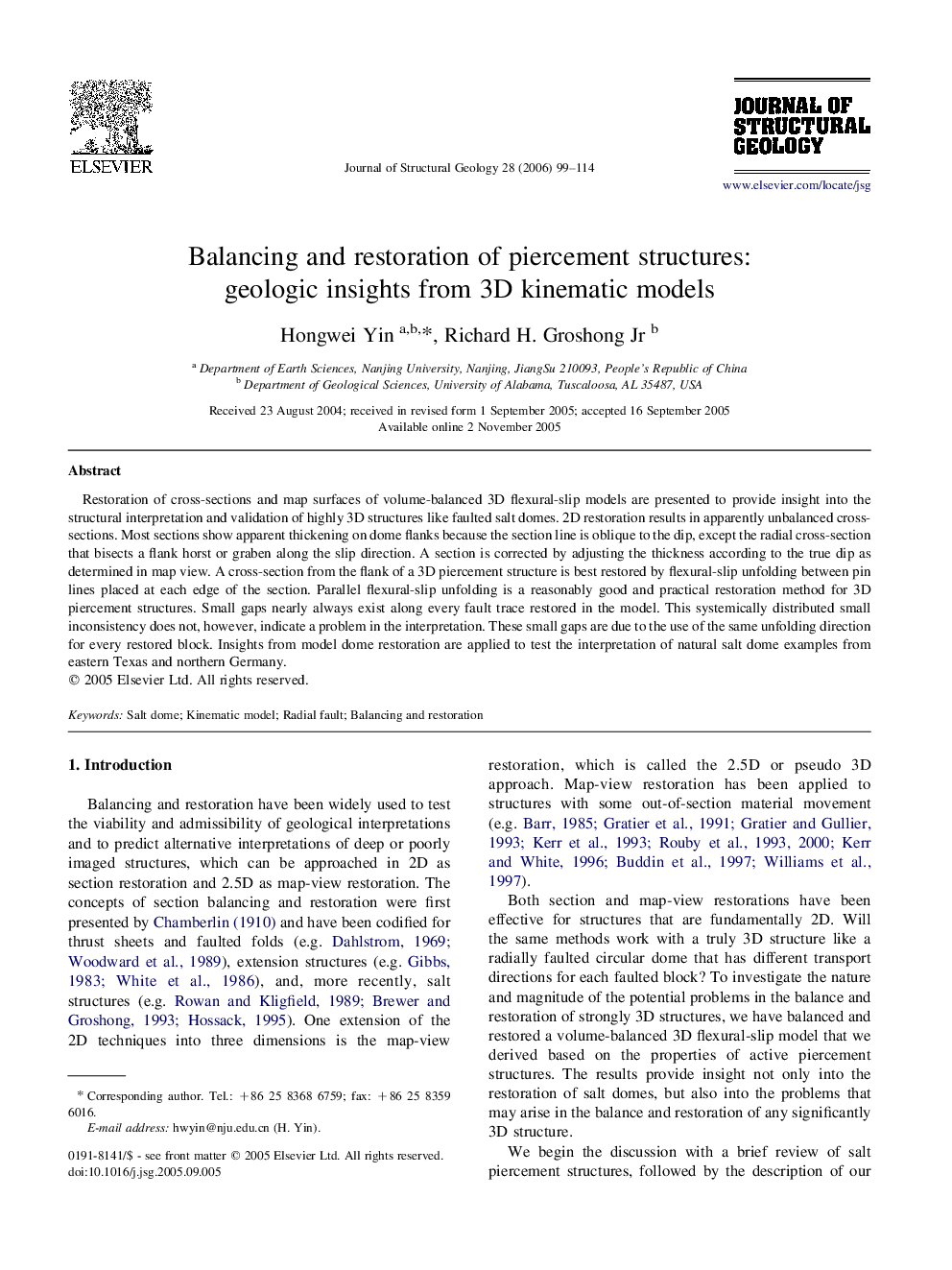| Article ID | Journal | Published Year | Pages | File Type |
|---|---|---|---|---|
| 4734081 | Journal of Structural Geology | 2006 | 16 Pages |
Restoration of cross-sections and map surfaces of volume-balanced 3D flexural-slip models are presented to provide insight into the structural interpretation and validation of highly 3D structures like faulted salt domes. 2D restoration results in apparently unbalanced cross-sections. Most sections show apparent thickening on dome flanks because the section line is oblique to the dip, except the radial cross-section that bisects a flank horst or graben along the slip direction. A section is corrected by adjusting the thickness according to the true dip as determined in map view. A cross-section from the flank of a 3D piercement structure is best restored by flexural-slip unfolding between pin lines placed at each edge of the section. Parallel flexural-slip unfolding is a reasonably good and practical restoration method for 3D piercement structures. Small gaps nearly always exist along every fault trace restored in the model. This systemically distributed small inconsistency does not, however, indicate a problem in the interpretation. These small gaps are due to the use of the same unfolding direction for every restored block. Insights from model dome restoration are applied to test the interpretation of natural salt dome examples from eastern Texas and northern Germany.
